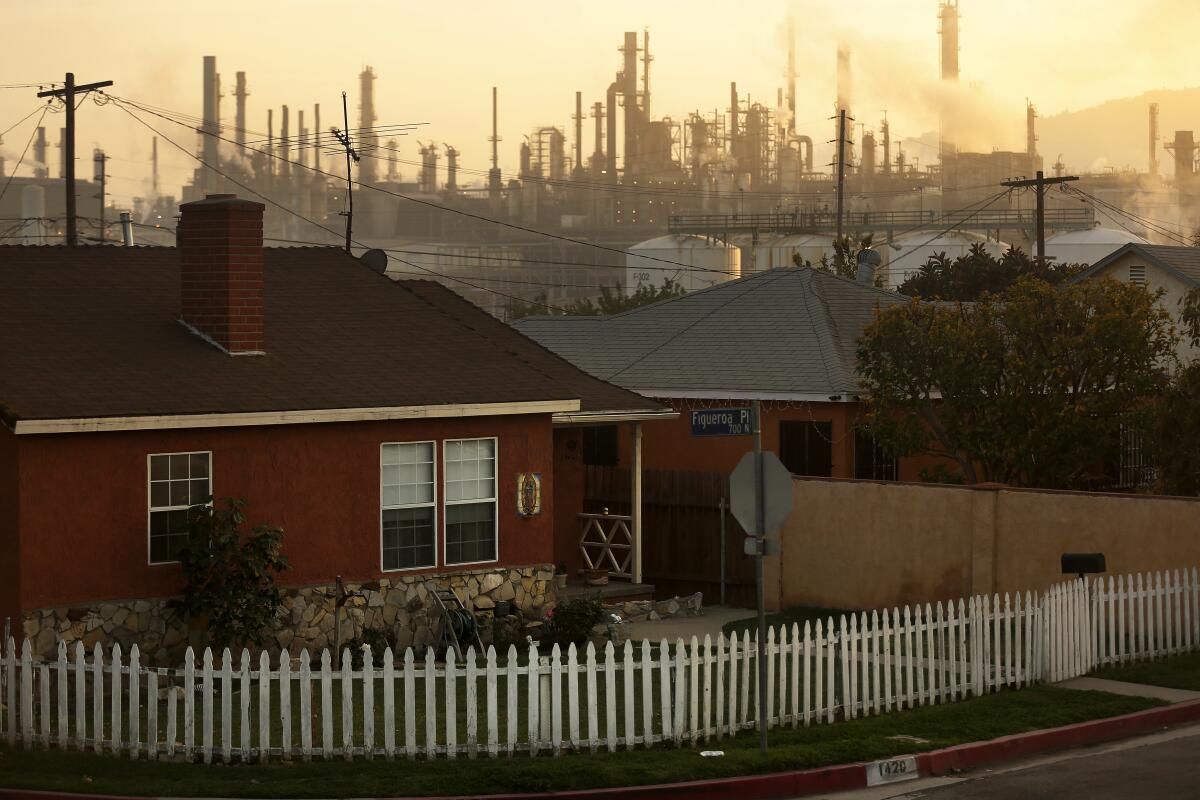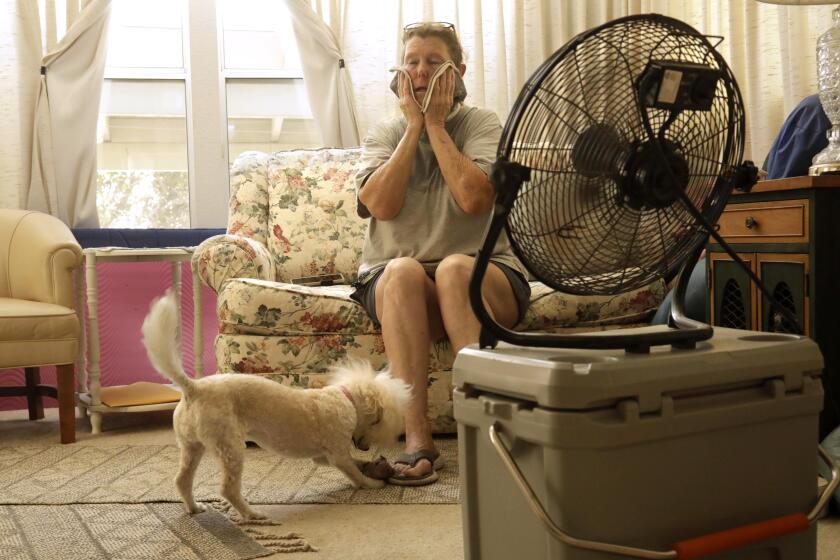Editorial: California needs to slash carbon pollution. Its pie-in-the-sky plan falls short

- Share via
California is increasingly suffering the effects of a spiraling climate crisis, from record-breaking and destructive wildfires and unhealthy, smoke-choked air to deadly heat waves and power outages. It is clearer than ever that to reduce our future suffering we must take bold and sweeping action soon to cut fossil fuel emissions.
Gov. Gavin Newsom seems to understand that. As record-breaking fires raged across the state in 2020, he said that it’s a “climate damn emergency” and that California needs to move faster to slash planet-warming pollution across the board. After more devastating wildfires last year, he directed the state’s powerful Air Resources Board to evaluate how to achieve carbon neutrality, or net-zero emissions, by 2035 — a decade sooner than California’s current 2045 target.
“We must do everything possible to accelerate our climate targets and increase the pace of action to transition to a low-carbon future,” Newsom wrote in a July 9 letter to his appointee Liane Randolph, who chairs the Air Resources Board.
So it’s puzzling that the Air Resources Board’s answer to Newsom’s call for urgency is a plan that is both lacking in vision and unrealistic. Agency staff released an emissions road map last month, known as the scoping plan, that not only discards the governor’s idea of a faster move to carbon neutrality as too costly, but also shows little ambition for accelerating climate action and ending fossil fuel pollution over the next two decades. It also fails to give sufficient details on how one of California’s most scrutinized climate programs, cap-and-trade, will cut emissions fast enough to meet looming state mandates.
After two years of deprivation, Southern Californians are being asked to do without something else: outdoor water. Considering the dire condition of our supplies, the restrictions are quite reasonable.
Though the plan lays out four alternatives for reaching carbon neutrality, air board staff said the one they selected, known as Scenario 3, represents the best balance of reaching carbon neutrality by 2045 while minimizing costs and job losses and could be more readily carried out than other, more ambitious scenarios.
But the plan is extraordinarily aggressive, if impractical, in one respect. To get to net-zero emissions by 2045, it relies heavily on unproven technology that would remove huge amounts of carbon dioxide from the air and also capture it from oil refineries and cement plants — the equivalent of nearly 100 million metric tons by 2045. That’s more pollution than all of California’s industrial facilities, or all of its gas-fired power plants, released in 2019, the most recent year for which data are available.
The Air Resources Board provided a Times editorial writer figures showing that under its proposal, 63% of the greenhouse gas reductions in 2045 would be achieved through direct emissions cuts, leaving the more than one-third of the pollution that remains to be captured or removed from the air. That’s even more than the “highest risk” scenario studied in a 2020 state-commissioned report on carbon neutrality, which noted that relying on “relatively untested” carbon removal technology would increase the likelihood that California would emit too much pollution and miss its climate targets.
A bill in the California Legislature would save lives during extreme heat waves by requiring dwelling units to maintain adequate cooling.
Environmental groups and researchers studying the plan have lamented that it does not call for hastening the shift to 100% wind, solar and other renewable energy by 2035 as President Biden and other countries like Germany are pushing for, and instead anticipates 10 gigawatts of new natural gas capacity in the state — the equivalent of building 33 large new gas plants — by 2045.
An Air Resources Board spokesman said that increased generation would be in the form of gas peaker plants needed to ensure grid reliability as California sees growing electricity demand during the early evening peak, and that gas generation would decline and taper off by 2045 as more renewables come online.
The plan’s embrace of carbon removal as a catchall solution puts it in the realm of pie-in-the-sky fantasy. By adopting this plan, the board would be asking us to believe that instead of slashing pollution right now, we can count on largely untested technology to reach carbon neutrality years into the future by sucking our pollution out of the air. In reality, we already have most of the solutions to the climate crisis right in front of us — electrifying everything we can as quickly as possible and fueling it with clean renewable energy. We just need the political courage to push ahead fast.
State scientists have recommended against listing Joshua trees as a threatened species. But they are imperiled by climate change and need protections.
Pinning so much on something so uncertain is a cop-out that’s similar to what California’s smog-control agencies have for years used to justify their inadequate plans to reduce health-damaging emissions. Rather than spell out the tough, new regulations needed to reduce smog, air quality regulators have stuffed those obligations into a “black box” of unspecified future pollution-reduction measures.
The Air Resources Board can do better than this weak plan. Before voting on a final version this fall, board members should direct staff to devise an improved version that will guide the state’s actions and deliver on Newsom’s vision of a faster, more ambitious response to the climate crisis. It should be strengthened to prioritize emissions-cutting actions we know work, phase out fossil fuels more quickly and focus on cleaning the air in the state’s most polluted communities.
More to Read
A cure for the common opinion
Get thought-provoking perspectives with our weekly newsletter.
You may occasionally receive promotional content from the Los Angeles Times.













